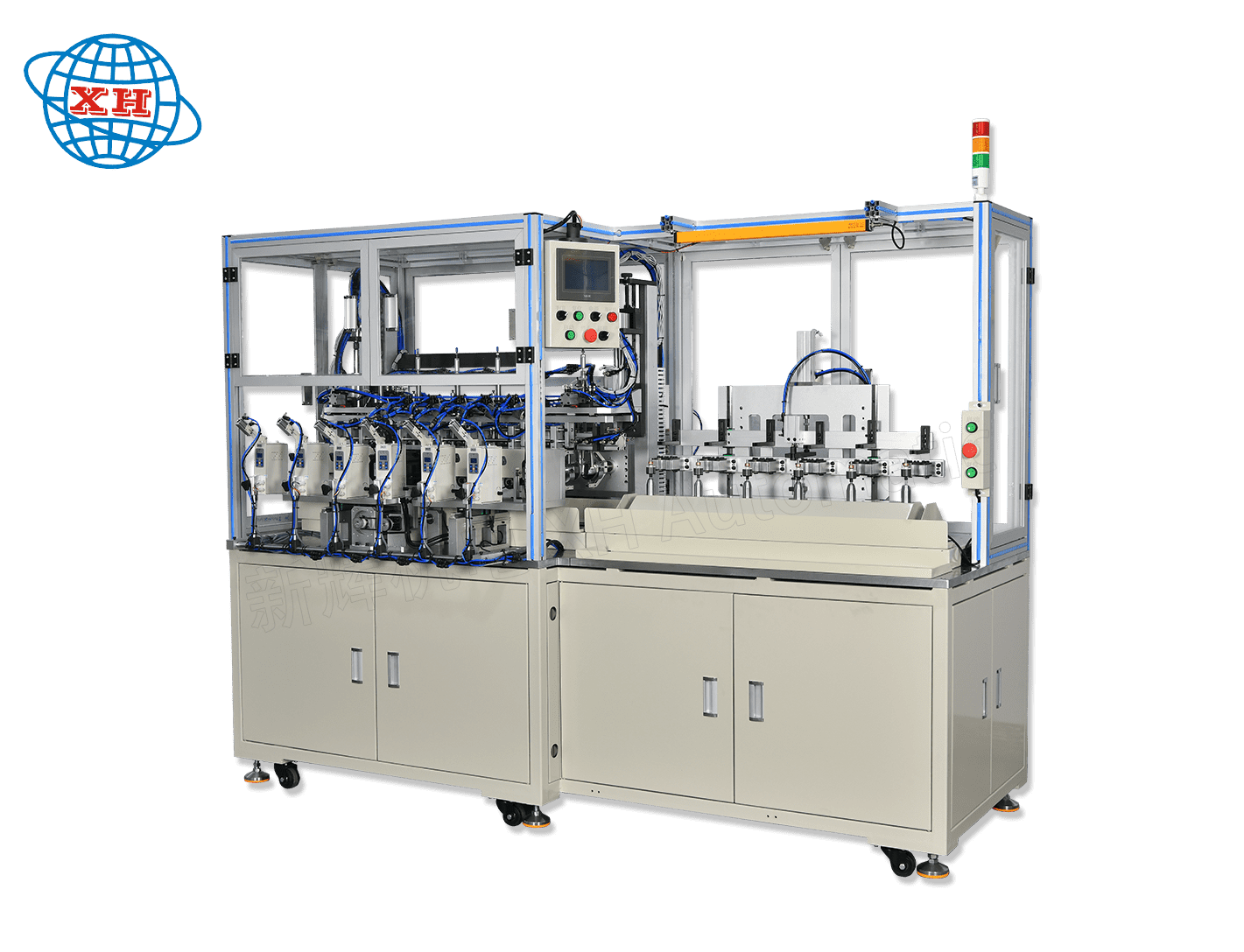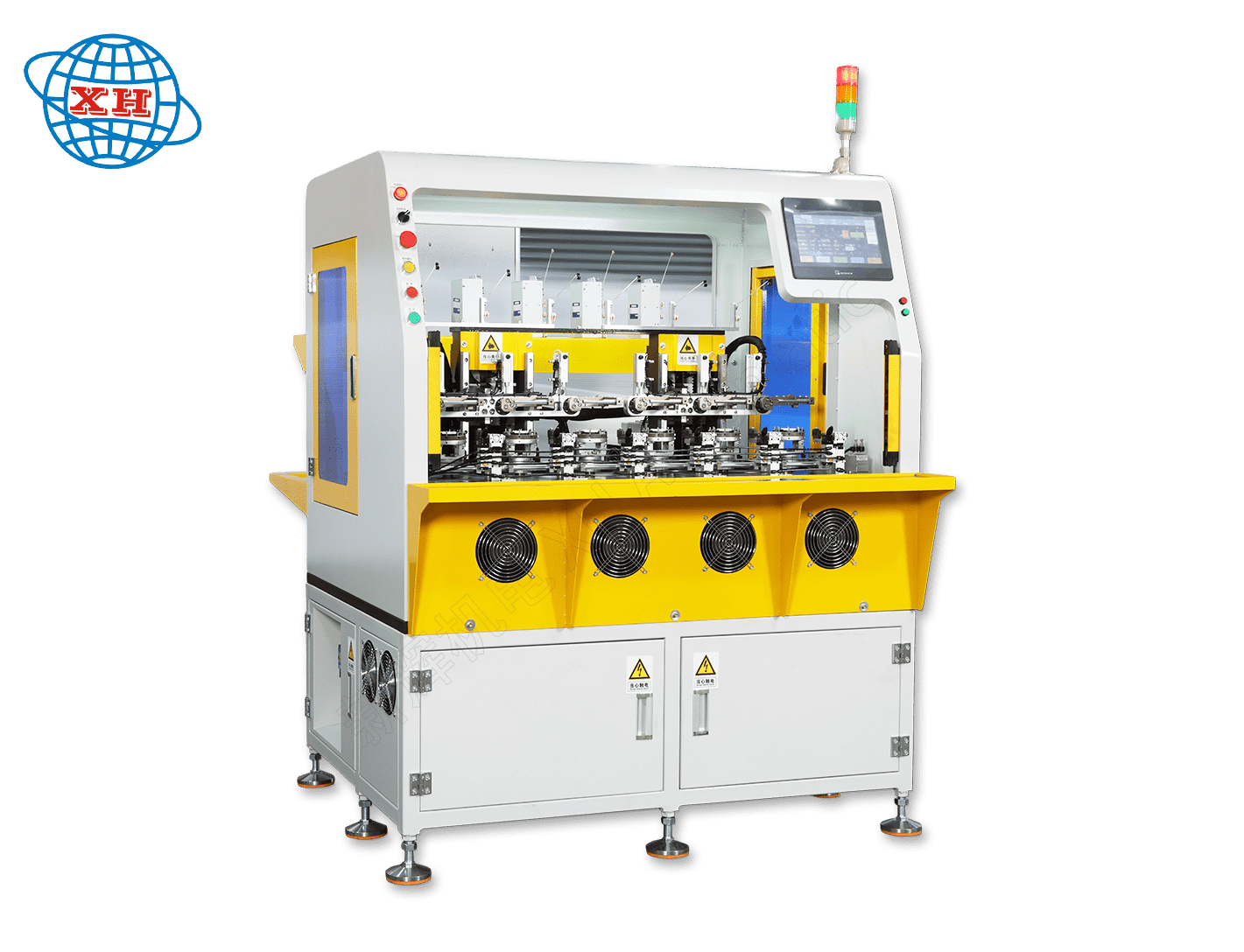The overall technical program of the manual six-station double flying fork winding machine involves many aspects, including structural design, working principle, technical features and application advantages. The following is a comprehensive overview of the technical program:
一、Structural design
1.Machine body and working table
The machine body serves as the supporting framework of the whole equipment, which is stable and durable.
The main working table is located at the top of the machine body and is the main platform for winding operation.
The sub-table may be used for auxiliary operation or for placing parts to be machined.
2.Double Fly Fork Structure
One of the core advantages of the Dual Flyer Winding Machine is its unique dual flyer design.
Each flying fork is equipped with an independent fixture to hold the wire and guide it through the winding process.
3.Lifting and moving mechanism
Components such as lifting plates and lifting structures are used to adjust the height and position of the workpiece or winding tool to suit different winding needs.
Moving components (e.g. guide rails, moving seats, etc.) ensure flexibility and accuracy during the winding process.
4. Control system
PLC (Programmable Logic Controller) is used to realize the control of the winding process.
The control system integrates sensors, touch screen and other components for real-time monitoring and adjustment of the winding parameters.
二、Working Principle
1. Feeding and positioning
The motor rotor is manually placed on the table and aligned by the positioning structure.
The positioning structure includes the cylinder for loading and unloading, limit lever and other components, which are used to ensure the stability of the workpiece in the winding process.
2. Winding operation
The fixture in the double flying fork structure clamps the wire and guides it to wind according to the set trajectory.
The motor drives the bobbin to rotate while the fixture moves automatically to complete the winding process.
3. Unloading and changing
When the winding is completed, the fixture automatically releases the wire and returns to the initial position to wait for the next operation.
The rotor is removed manually and replaced by another set of rotor for continuous production.
三、Technical features
1. High efficiency
The double flying fork design dramatically improves the winding efficiency, resulting in a significant increase in production per unit of time.
2. Precision
Precise mechanical structure and advanced control system ensure the accuracy and consistency of the winding process.
3. Flexibility
Applicable to a wide range of materials and specifications wire winding needs, material adaptability.
4. Automation and Intelligence
Highly automated working method reduces labor cost and improves production efficiency.
Intelligent control system can monitor and adjust the winding parameters in real time to ensure the stability of winding quality.
四、Application Advantages
1. Improve production efficiency
High efficiency and high precision winding process makes the production cycle shorter and improves the overall production efficiency.
2. Reduce production costs
Automation and intelligent production methods reduce labor costs, while reducing errors and waste caused by human factors.
3. Improve product quality
The winding process and stable winding quality help to improve the overall performance and service life of the product.
4. Expanding application areas
Double flying fork small micro-rotor winding machine has a wide range of applications in electronics, communications, automotive manufacturing and other fields, providing strong support for the development of related industries.














